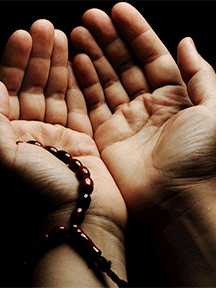By Riham Osman
In The Chronicle of Higher Education article, “Is Your Campus Diverse? It’s a Question of Faith,” Eboo Patel, founder and executive director of Interfaith Youth Core, sheds light on the significance of faith identity in American colleges. He argues that U.S. colleges can not disregard faith identity anymore because faith has now become the main topic headlining the news, and our public discourse has a continuous undercurrent of religious prejudice. Additionally, American universities are becoming more diverse as many Muslims students are enrolling in Catholic universities, which draws attention to the issue of faith identity in U.S. colleges.
In the New York Times article “Muslims From Abroad Are Thriving in Catholic Colleges” Richard Préz-Peña writes that Muslim populations on Catholic campuses are growing everywhere at a faster rate than those at public universities. According to a statement by The Catholic University of America (CUA) President John Garvey, since 2007 Muslim enrollment at CUA has more than doubled, from fifty-six students to 122 students. For the Washington Post, William Wan reported in “Enrollment of Muslim Students Is Growing at Catholic Colleges in U.S.” that according to the Higher Education Research Institute, Catholic colleges had an even greater percentage of Muslim students in 2009 than the average four-year institution in the United States.
The enrollment of Muslim students in Catholic universities has surprised administrators. Some Catholic campuses are creating prayer rooms for new Muslim students and hiring Islamic chaplains to serve as ministers to Muslim students. For instance, Georgetown University, which is the nation’s oldest Catholic and Jesuit university, has a Muslim student population that is growing, and they have set up a prayer room, Muslim Student Association, and an entire center dedicated to Muslim-Christian understanding. The school also hired a full-time Muslim chaplain in 1999. Other Catholic university administrators are uncertain how to adjust to the inflow of Muslim students. The Center for American Progress stated that aside from Catholic universities, many Muslim students have enrolled at Brigham Young University, where 98.5 percent of all students are Mormon. Brigham Young University is taking steps to develop a more welcoming environment for its Muslim students. For instance, each Friday, the university reserves a room in the student center where its Muslim students can assemble for prayers.
Muslim students say they enroll at Catholic schools for many of the same reasons as their classmates, but there is also a spiritual attraction that draws in Muslim students. Reef Al-Shabnan, a Muslim political science major at Catholic university told Wan that she enrolled at the university “because it is an overtly religious place, it’s not strange or weird to care about your religion here, to pray and make God a priority. They have the same values we do.” Catholic universities share many similarities with Islam’s conservative culture due to the fact that the universities typically separate men and women in their dorms and impose visiting hours. The Catholic University of America prohibits sex before marriage, which is also forbidden in Islam. Additionally, daily prayer and fasting are common concepts in both Catholicism and Islam. Ali Basiri, a graduate student at Catholic University of America commented to Wan, “I feel there is something powerful here because people are thinking about God all the time and not just about their own life or studies.”
Patel argued that on American Catholic campuses, it seems that the strong expression of one faith identity isn’t a wall that separates people of different faiths, but is a bridge that brings people together. The increase of Muslim students in Catholic universities appears to be creating a sense of tolerance and acceptance between the two faiths. Muslims and Catholics are teaching each other about their religious traditions, which develops an interfaith dialog. Patel argued that one of the reasons Barack Obama was elected president is due to the 1990s-era multiculturalism movement on college campuses, and if we were to have a 21st century campus inter-faith movement, it could have a significant impact on the future of the United States. The increase of Muslim students on American Catholic university campuses is just the beginning of this inter-faith movement which could lead our nation to one day electing the country’s first Sikh, Buddhist, Hindu, or Muslim president.
Riham Osman is a senior at the University of Mary Washington majoring in international affairs and minoring in Middle Eastern studies. Mary Washington is home to the Kappa of Virginia chapter of Phi Beta Kappa.




